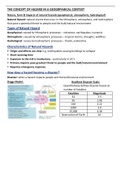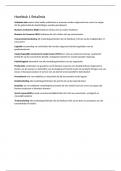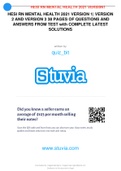Lecture notes
Hazards
- Institution
- AQA
Concept of a hazard in a geographical context (types of natural hazard, characteristics of natural hazards, how does a hazard become a disaster, risk & vulnerability, hazard perception, hazard management, park model, hazard management cycle) Seismic hazards (causes, distribution, focus & epicentre...
[Show more]






